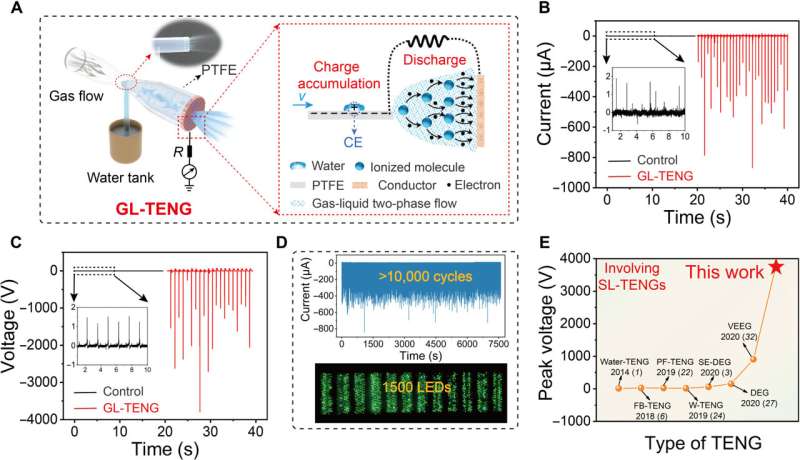Gas-liquid, two-phase, flow-based triboelectric nanogenerator with ultrahigh output power

Chinese researchers have designed a gas-liquid two-phase flow-based triboelectric nanogenerator (GL-TENG) with ultrahigh output power, according to a research article recently published in Science Advances.
Triboelectrification of solid-liquid interfaces has shown great potential for water-based energy harvesting applications. However, it is still a great challenge to realize the efficient collection of triboelectric energy at the solid-liquid interface through interface regulation.
Recently, researchers from the Lanzhou Institute of Chemical Physics (LICP) of the Chinese Academy of Sciences, have designed a GL-TENG to boost the power output of the solid-liquid triboelectric nanogenerators (SL-TENGs), by significantly increasing the solid-liquid contact electrification (CE) area and relative separation speed.
The GL-TENG can achieve ultrahigh voltage and volumetric charge density of 3789 volts and 859 millicoulombs per cubic meter, respectively. With a high-power output of 143.6 kilowatts per cubic meter, a 24-watt commercial lamp can be directly lighted by a continuous-flow GL-TENG device.
The rapid accumulation of interfacial triboelectrification is realized through the intense friction between the gas-liquid two-phase flow and the pipe wall. Through the innovative mechanism of coupling triboelectrification and electrostatic release, the electrical output performance of the power generation device is greatly improved.
This work has developed a new gas-liquid two-phase flow-based model of an electricity generator, and demonstrated the ability to drive various electronic devices directly. It has also provided a new strategy for efficiently harvesting energy from water and opened up an avenue for future commercial use for SL-TENGs.
More information: Yang Dong et al, Gas-liquid two-phase flow-based triboelectric nanogenerator with ultrahigh output power, Science Advances (2022). DOI: 10.1126/sciadv.add0464

















